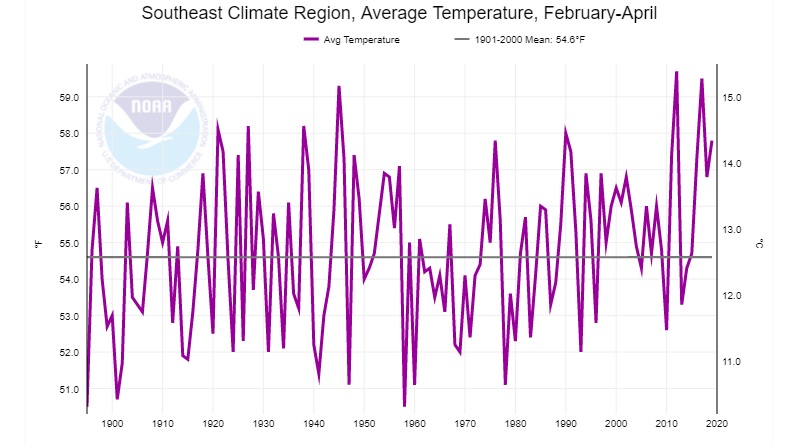Climate and Ag in the news
-

Even though news stories across the media are talking about the end of the decade and the start of a new decade, whether or not it is really the end of the decade is a matter of some debate. For climatologists, the next normal period of 1991-2020 is still a year from ending. Normal temperature…
Posted in: Climate and Ag in the news -

If you love looking at images of weather from space, you will enjoy looking at this collection of fascinating images from Stu Ostro at The Weather Channel. He has captured many images of hurricanes, lightning, clouds, and fires in his yearly summary. Note that these are mostly satellite images, not surface images of clouds. You…
-

A journal article released today in Science Advances shows that when springlike temperatures occur earlier in the year, plants green up earlier and draw more moisture out of the soil, changing the water balance by increasing evapotranspiration and drying out the soil earlier in the growing season. It could also amplify summer droughts by reducing…
-

The Southeast Farm Press posted a reminder this week that the annual Georgia Ag Forecast series will be held at five different locations around Georgia near the end of January. This event provides information about last year’s harvests of Georgia crops and an outlook for prices and other information for the coming year. You can…
-

When I was a kid, my dad would sometimes take me ice fishing on the local lake in winter. A lot of folks in Michigan, Wisconsin and Minnesota go ice fishing every year. When I was the Wisconsin State Climatologist, one of my jobs was to call the official closing and opening of the lakes…
Posted in: Climate and Ag in the news -

While I have been away, I’ve read lots of interesting stories about weather and climate in the news. Here are a few I really liked, in no particular order. Forbes.com: Five social media posts about weather that need to go away in 2020 Yale Climate Connections: The case for growing lettuce in New England, even…
-

Scientific American recently posted an article describing a new study that shows an increase in highly amplified jet stream patterns which can lock into place for long periods. This can lead to simultaneous droughts and associated food shortages in different parts of the world, especially important grain-producing areas. If this continues to occur, that would…